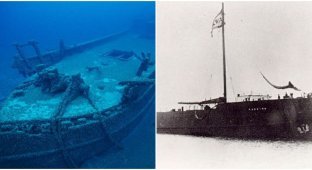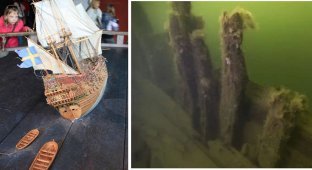The Titanic is, of course, the most famous shipwreck in the world, but its wreckage is only visible to those who descend on deep-sea submersibles or observe it with remote robots. But if you open Google Earth, you can see a bunch of other sunken ships, their rusty hulls slowly crumbling in shallow waters around the world. 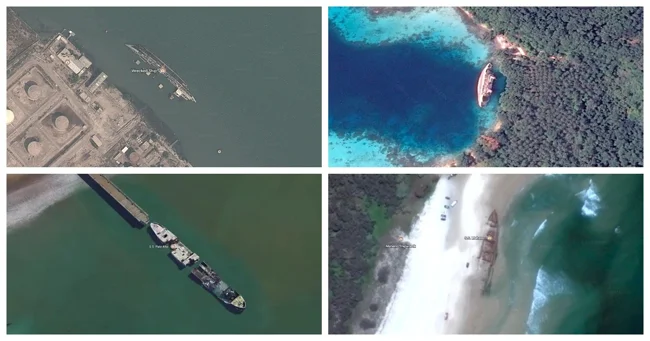
1. SS City of Adelaide 
The SS City of Adelaide, built in 1864 in Glasgow, was 77 meters long and was used for many years to carry passengers. In 1902, she was converted into a coal storage vessel. In 1912, a fire broke out on board, causing damage to part of the ship. Later, a businessman from Magnetic Island, Queensland, Australia, purchased the ship, planning to turn it into a tourist attraction or a breakwater. However, in 1916, while being transported, the ship ran aground in Cockle Bay, where it remains to this day. It is possible to wade up to it at low tide, and locals sometimes collect oysters growing on its sides.
2. MV Captayannis 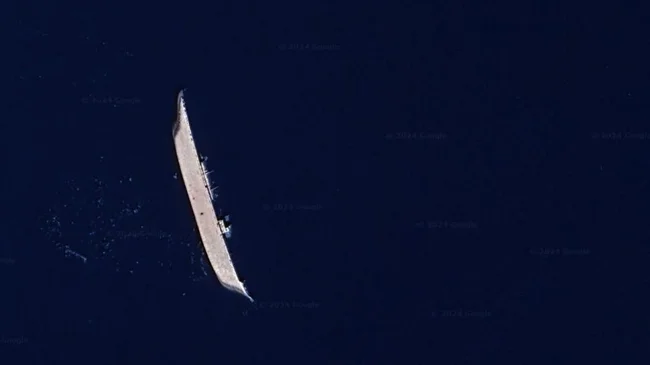
On January 27, 1974, the merchant ship MV Captayannis, also known as the "Sugar Boat", was hit by strong winds while moored on Scotland's River Clyde. The Greek-registered vessel was carrying raw sugar from East Africa to a refinery in Greenock at the time. The 60 mph (96.5 km/h) winds pulled at the ship's anchor and the Captayannis began to drift. The crew started the engines, but the ship collided with the anchor chains of the BP tanker. The collision tore a hole in the hull of the MV Captayannis. The crew managed to steer the sinking MV Captayannis onto a sandbank, where it became stuck and capsized. It remains there to this day; looters have stripped it of some materials, but the wreck does not interfere with the movement of other ships, so it has been left to rust.
3. MV Plassy 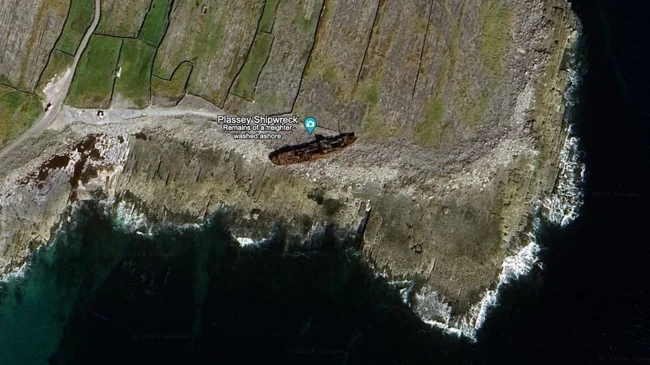
Built in 1941, the MV Plassy was the first steamship owned by the Limerick Steamship Company Limited. The company was mainly involved in the trade between Irish ports and continental Europe. However, the Plassy was a "tramp ship" and sailed wherever its cargo needed to be delivered, including South Africa and Greece. The ship carried refrigerated goods such as fruit and fish.
But the local voyage from Fenit to Galway turned out to be the Plassy's last. Early one morning in March 1960, strong winds and heavy rain drove the ship ashore at Finnies Rock, causing a hole in its bottom. The crew was forced to abandon ship. Locals came to the aid of the sailors, who rushed to save them. Although the ship itself could not be restored, the crew managed to find work elsewhere. The remains of the Plassy are still at Finnies Rock.
4. Shale Scow 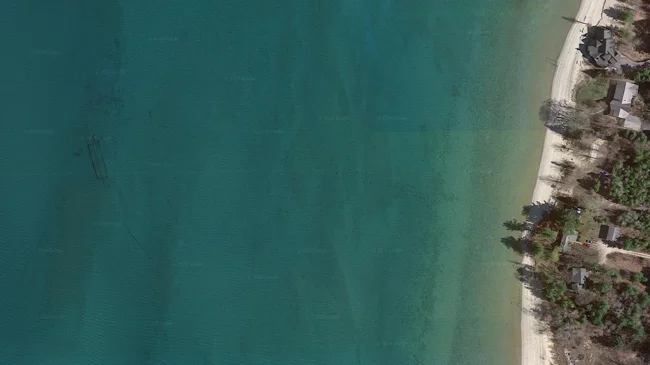
The 100-foot-long Shale Scow sank in 1903 while moored at a dock in Elk Rapids, Michigan. Because the boat sank in just 12 feet of water, it became a popular snorkeling spot.
5. SS Benwood 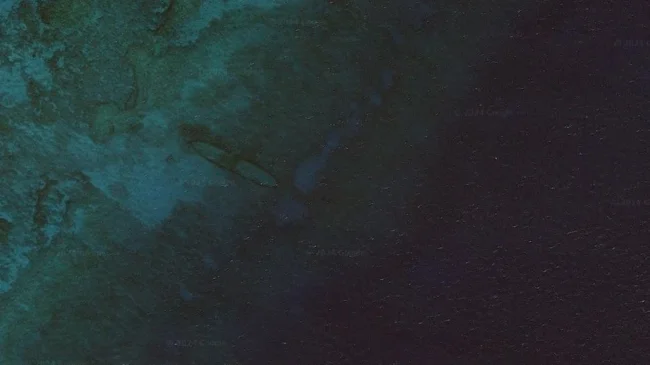
During World War II, the Norwegian steamship SS Benwood was equipped with an impressive arsenal. Built in England in 1910, the 110 m (368 ft) long vessel was registered as a merchant ship when it sank in 1942, but due to the U-boat threat, it was carrying 12 rifles, a 4-inch (10 cm) gun, six depth charges, and 36 bombs.
However, Benwood was not sunk by an enemy submarine, but fell victim to rumors of its presence. On April 9, 1942, the steamship was en route from Tampa, Florida, to Norfolk, Virginia, carrying a cargo of phosphate ore. During the night, the crew received word that a German U-boat was in the area, so they turned off their lights to avoid attracting attention. Another steamship, the Robert C. Tuttle, was traveling in the opposite direction and did not notice the Benwood until they collided in the dark. The Tuttle was larger and newer, but the collision caused the Benwood to take on water. The captain ordered the crew to abandon ship.
Although the Benwood sank, it was not a total loss. After World War II, the U.S. Army used it as a target for aerial target practice, and salvage operations recovered some of the material. Today, it is a popular dive site in the Florida Keys.
6. The Altair, Brazil 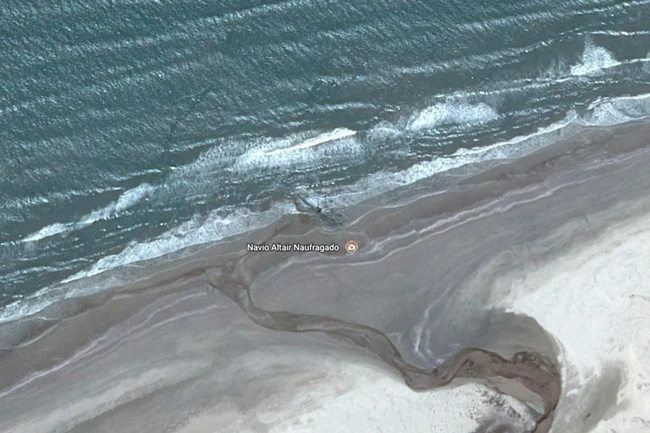
The shipwreck known as the Altair lies off the coast of southern Brazil, south of the Rio Grande. A severe winter storm in 1976 was its demise, after which the ship was abandoned and looted. Today, it is home to a variety of wildlife, and the adjacent beach is known for fishing and sea sports, including surfing. Tourists visiting the site can also enjoy sand dunes, waterfalls, and wildlife such as black-backed gulls, turtles, and hawks.
7. A Sunken Ship in Iraq 
A majestic ship that once sailed proudly on the waters now lies in the arms of the Shatt al-Arab River, also known as the Arvand Rud. This river, formed by the confluence of the Tigris and Euphrates, flows through southern Iraq, marking the border between Iran and Iraq, not far from the Persian Gulf. Some even believe that this is where the biblical Garden of Eden was located.
Alas, the Shatt al-Arab River has become something of a graveyard for ships. The General Company of Iraqi Ports estimates that there are about 36 sunken ships at the bottom of the river. A tragic fate befell this giant vessel, which was wrecked in the waters of Basra, Iraq, and now lies capsized in this ancient river.
8. USS Utah 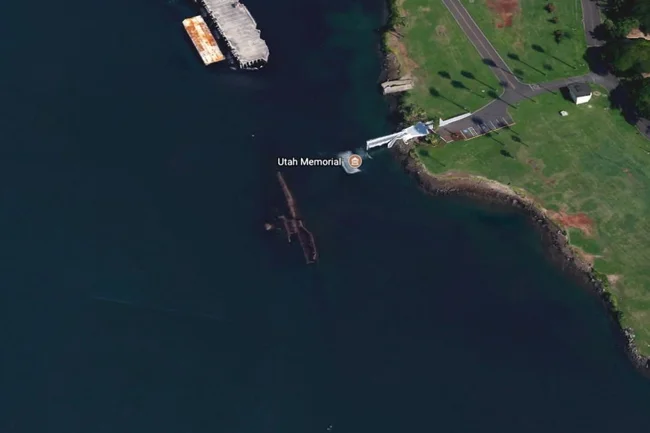
On December 7, 1941, during the attack on Pearl Harbor, Japanese B5N2 "Kate" torpedo bombers sank the USS Utah. This dreadnought battleship had long since retired from combat, having been converted into an auxiliary vessel. However, one of the Japanese pilots, mistaking it for an active battleship, fired a torpedo at it. His wingman followed suit, also attacking the USS Utah.
The attack killed 64 of the ship's crew, 58 of whom were buried underwater when the ship capsized. The Japanese Air Force was furious when it learned of the mistake, as they only had 40 torpedoes, and the wasteful use of two of them was seen as an inexcusable waste of valuable ammunition.
9. SS Maheno 
During World War I, New Zealand converted the passenger ship SS Maheno into a floating hospital. After the war, the SS Maheno returned to its original role as a passenger ship, and in 1935, it was sold for scrap to a shipyard in Osaka, Japan. However, the ship never reached its destination. While being towed, the ship was caught in a cyclone that severed the tow line connecting the SS Maheno to the towing ship Oonah. Three days later, the SS Maheno and its small crew were found stranded on a beach on Fraser Island, off the coast of Queensland, Australia.
10. Staten Island Boat Graveyard 
The "Accidental Marine Museum," as one marine magazine calls it, is a boat graveyard on the shores of southern Staten Island, New York. It was founded in the 1930s by John J. Witte. Witte would not dismantle a single vessel unless he had a buyer. So the boats kept piling up, and soon Witte Marine Equipment Co. had more ships than it could handle. The wrecks have since become habitats for underwater marine life. Environmental laws require that hundreds of ship hulls remain intact at what is now known as the Donjon Recycling Facility.
11. SS Palo Alto 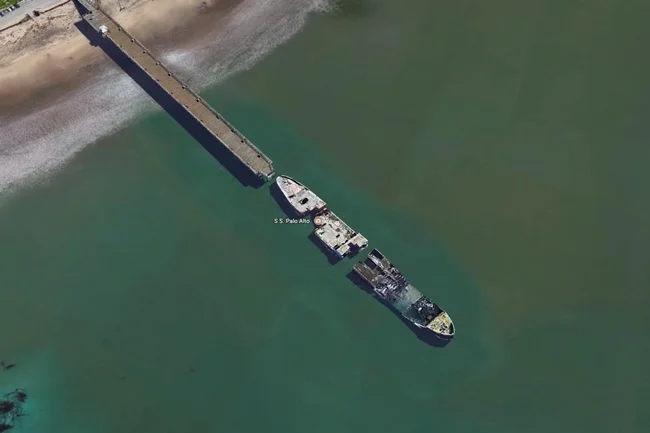
This concrete tanker was built for World War I, but the war ended before it could see combat. During the war, concerns about a steel shortage arose, so it was decided to build 24 new ships out of reinforced concrete. After being built in Oakland, the SS Palo Alto was moved to Aptos, California, in 1929. In 1930, a pier was built on the ship, and it became a popular tourist attraction, as well as an environmental issue, which was resolved in 2006. The ship continues to deteriorate, and in 2017, a storm tore off its stern.
12. SS Francisco Morazan 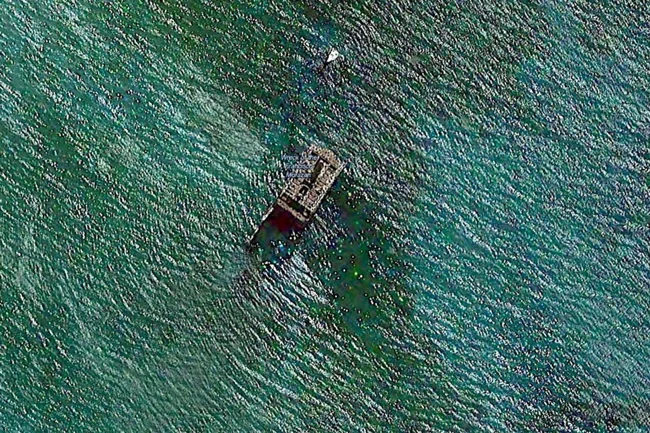
The SS Francisco Morazan sank in Lake Michigan in 1960. The ship, en route from Holland to Chicago with 940 tons of cargo, ran aground during a severe snowstorm. On November 27, 1960, with 40 mph winds blowing water on board, the crew mistakenly ran the vessel aground on South Manitou Island. Blinded by snow and heavy fog, the sailors abandoned the ship. Since the owners never showed up, the vessel was abandoned in the lake, now home to cormorants and seagulls.
13. Schooner Yacht Half Moon 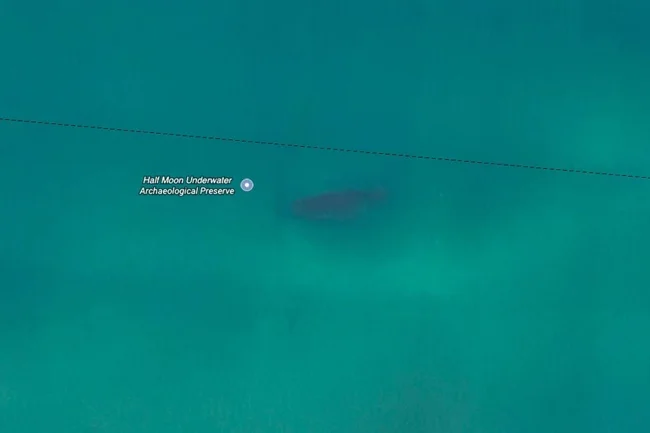
The Half Moon Underwater Archaeological Preserve is the burial site of a German 366-ton, twin-masted steel schooner built in 1908. Originally named Germania, it was used as a racing yacht. During World War I, the vessel was captured by England, sold, and renamed Half Moon. It was then converted into a floating cabaret in Miami during Prohibition. In 1930, the schooner sank when a storm ran it aground. Today, Half Moon is a popular diving destination.
14. Abandoned Ship in Argentina 
The St. Christopher will likely remain moored in Ushuaia Harbor in southern Argentina forever. It was an American-built salvage tug that served in the Royal Navy during World War II under the Lend-Lease program. After the war, the tug was decommissioned and sold in 1947 to a Buenos Aires resident. The new owner used it for salvage operations, but in the Beagle Channel off Ushuaia, the vessel developed engine and rudder problems. In 1957, the St. Christopher ran aground and was abandoned. Since then, photographers have been documenting the process of its destruction. In 2004, the ship was drained of its remaining fuel to prevent an environmental disaster.
15. Shipwreck - Skeleton Coast, Namibia 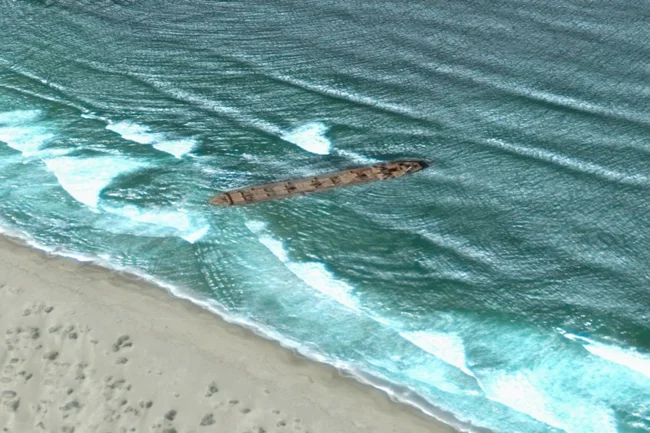
The 1,570 km long Skeleton Coast is littered with shipwrecks. This is due to the mixing of cold Atlantic currents with the dry, warm air of the Namib Desert, creating a thick fog that can confuse even experienced captains. The Khoisan Bushmen, a tribe of hunter-gatherers, call this coast "the land that God made in anger." The land is described as littered with huge bleached whale bones, crumbling shipwrecks, dead plants, and traces of rare desert creatures desperately searching for food.
16. MS World Discoverer 
A Danish cruise ship built in 1974 was wrecked when it hit a rock while on a cruise in 2000. The crew sent out a distress signal and all passengers were safely evacuated to a passenger ferry. But the ship's story did not end there. During the Solomon Islands civil war, the ship was looted and damaged. To this day, it sits in Roderick Bay, where tourists take pictures of the tropical vegetation that has grown on its deck.
17. Breakwater Boat 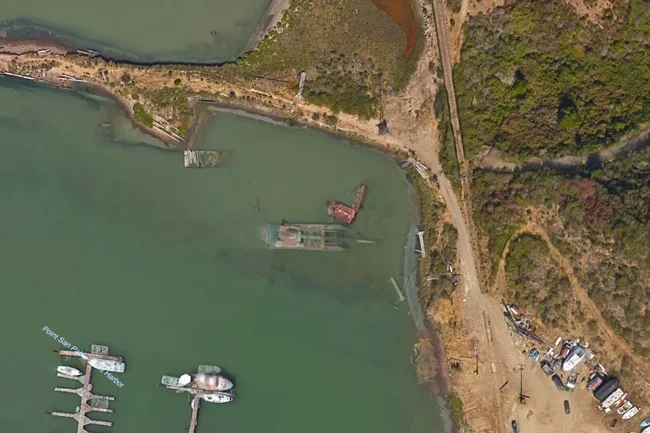
Point San Pablo Marina in Richmond, California, is home to a sunken ship that was placed there as a breakwater to protect the harbor from the waves of San Francisco Bay. The harbor's founder, Captain Raymond H. Clark, lacked the funds to build a breakwater, so he towed the doomed wooden schooners there. This graveyard of coastal steamboats has become a picturesque place, especially for catching striped bass, which were abundant here.
18. Oakland's Treasure 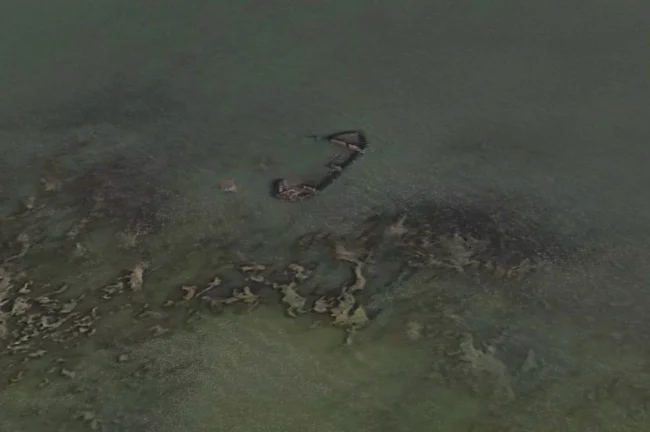
The waters around Oakland and San Francisco are littered with rotting shipwrecks. This one is in San Leandro Bay, near Oakland International Airport.
19. Shipwrecks on the Thames River 
These frozen boats lie in the Thames River, near the U.S. Coast Guard Academy in New London, Connecticut.
20. Disaster in Greenland 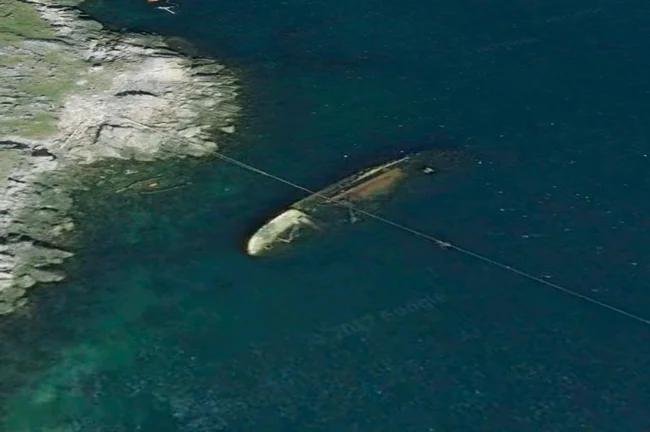
This shipwreck lies on the seabed off the southwest coast of Nuuk, Greenland.
21. The Skeleton of a Ship Off the Coast of Cape Cod 
The outline of the sunken ship can still be seen at Long Point in Cape Cod.
22. The Ship That Wrecked in Baja California Sur, Mexico 
This enormous vessel washed ashore on a beach in the Mexican state of Baja California Sur.
Add your comment
You might be interested in:












